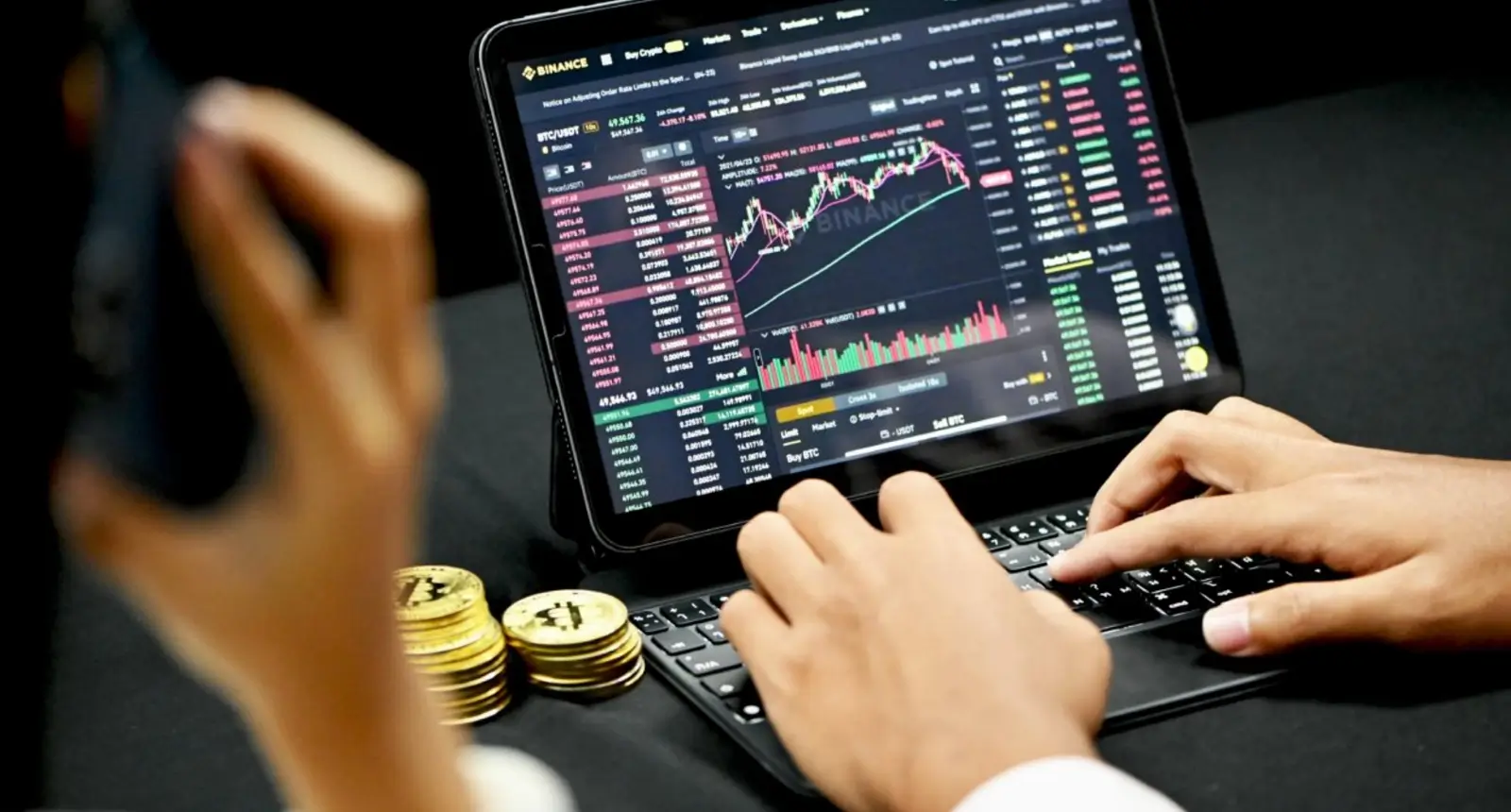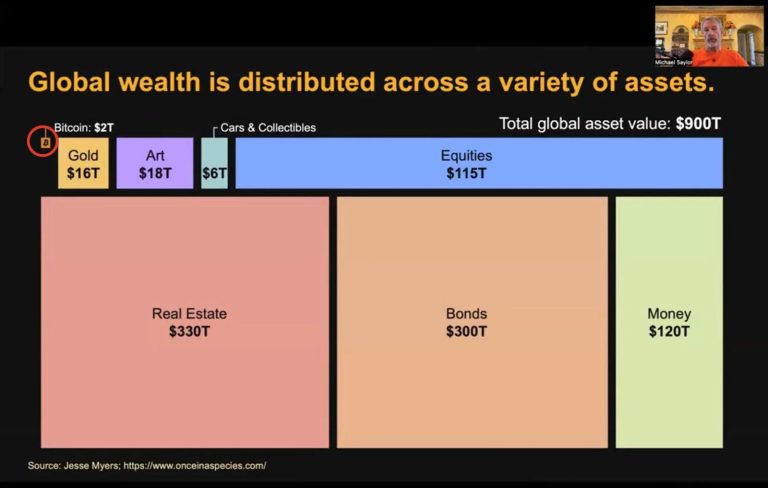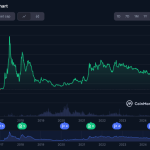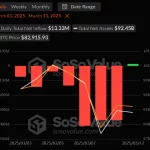Trading Bitcoin and Altcoins is like navigating a fast-moving river. It’s a continuous and rapidly changing process, often accompanied by significant events.
If you swim against the current, you might disappear completely. To enhance your trading skills and market understanding, it’s best to learn from others’ mistakes. This article is written based on extensive experience in the crypto field and after numerous cryptocurrency trade positions over the years. Of course, mistakes were made along the way. Shall we begin?
The Order Book – Placing Commands Correctly
Let’s discuss the proper way to use the order book. A coin’s value is determined by the last executed transaction, at the meeting point between buyers and sellers, according to supply and demand forces. These commands are organized in a table known as the order book. In crypto, it’s all about volatility.
Therefore, and following the prior tips in our crypto trading article, when you enter a position, it is recommended to set the sell level for taking profits. Alternatively, while aiming to achieve both simultaneously, set a stop loss to minimize losses. But how will we know precisely where to place these commands? To identify resistance and support areas, we start by analyzing the graph at a basic level. A beginner’s technical analysis article will assist with this task.
We identify points where we want to take profit (resistance levels) and simultaneously identify support levels. By referring to the order book, we find the optimal levels to place these commands. Note that if support levels break down, it is time to cut the losses.
Identifying sell levels to take profit: Using the order book, we identify the areas of resistance we previously analyzed. It is likely that massive supply (a “wall” of sell commands) is present around these spots due to their resistance. The trick is to place our sell commands precisely one step ahead at a slightly lower price, so if the demands start to eat away the supply wall, our command is already placed and sold to profit.
Identifying stop loss levels to minimize losses: In the order book, we identify the support points we analyzed before. Massive demand (a “wall” of buyers) is likely present around those spots due to their support. This is the best zone to place the stop loss command, although it should be placed a little lower than the high-demand zone. They will only reach our command if the sellers manage to lower the price and the “wall” of buyers breaks. The “wall” of buyers acts as a protection level for our command.
Is it possible to place a ‘take profit’ and a ‘stop loss’ command simultaneously? As of the time of writing, most trading exchanges, excluding some leveraged trading exchanges like BitMEX, do not support the simultaneous placement of the two commands.
In a perfect world, we could set both a stop loss for the trade and levels of profit-taking, reducing the chance of substantial loss. Until that happens, we will settle for what we have—I usually set take profit levels for some parts of the position while setting a stop loss level for the other portions.
Graph Analysis – Altcoins vs Bitcoin and vs Dollar
Major Altcoins have the most volume traded again in USD. Thus, analyzing graphs of those Altcoins should be done while comparing them to their Bitcoin graph and dollar value graph. Here on CryptoAustralia, we ensure we do that for our weekly market reports. If we were solely analyzing the Bitcoin value chart, we would surely miss the accumulation period of Ethereum by roughly $300 (recall $300 of Bitcoin accumulation back in 2015?). At the time of writing, Ethereum is trading a month later for more than $1,000 for one Ether.
Controlling Your Emotions
An unbreakable rule in trading says you should never involve your emotions in trading. This is a fundamental rule for anyone who trades over any term, but especially for those who trade in the short term. Imagine buying Bitcoin according to the DCA strategy: Let’s say the Bitcoin price crashes by 40% in three days. Now what? Obviously, it is time to buy a second portion of the coin (according to DCA) and average the initial trading entry price. Instead, almost everyone I know got “cold feet” exactly at the “terrifying” moment of decrease and did not complete the purchase of the second share. Why does it happen to us? One word – emotion. Emotions, in this case – fear of loss, affect us and completely disturb our plan of action. If you are one of those (yes, the majority) who won’t buy the second share in the example above, you should consider your future as a crypto trader, in particular. Overcoming your emotions is also important after an unsuccessful trade or after you have sold a coin that is skyrocketing just after you sold it (FOMO). To sum up, don’t regret the profit you’ve missed, and don’t feel guilty about lost trades. Set yourselves a plan of action together with a set of goals, and act accordingly – as if you were a pre-programmed computer. Human beings are not rational creatures.
Recommendation for such a plan: After placing target sell commands, and given the coin has reached its first goal, you need to close out half your position. Meanwhile, increase the stop loss to the initial entry level (so you won’t lose at all). At the second target level, you should close out an additional quarter of the position. Now, it is likely you will stay in the position with a quarter of it, although with the profits alone – once you get the fund’s money back “home”. At this point, the profit game becomes unlimited. Coins that pump up 2,000% in two weeks are not a rare sight in the crypto world. When you are only playing your profits – you are on the safe side, and it becomes a lot easier.
What Goes Down – Does Not Necessarily Go Up Again
An additional common mistake is searching for crashed coins, according to their value against Bitcoin, hoping they will return to their glory prices. So, newsflash – some coins are light-years away from their peak levels. Take Aurora, for example; in March 2014, an all-time high price of 0.14 Bitcoin for one Aurora was recorded. As of the time of writing, Aurora trades at a 99.9% discount – 0.00014 Bitcoins. Could the (damned) Aurora make a move upwards 1000x? You’ll never know. You surely can’t assume a coin being lower than its peak price is an opportunity rather than a falling knife. Some coins disappeared and slowly got out of continuous trading – a scenario definitely worth considering (especially with low-cap and volume altcoins).
Time is Money
A week in the crypto market is equivalent to three months in the traditional capital stock exchange in terms of events and occurrences. One who wants to jump right into the deep water of crypto trading has to follow it not just daily but on an hourly basis. It’s not everyone that can play this game. Nevertheless, you need to consider the amount of time invested in the process. Sometimes, it pays off to be a long-term investor rather than a daily trader. By the way, as a daily trader, it does not necessarily mean you are bound to buy, sell, and trade every single day. Trades can reach their destination within minutes, as well as within months. Think about the time you are willing to invest in studying and tracking the market. Remember, your time has marginal cost, or in other words – your time has a price tag. If you have decided to put your time and effort into trading on a daily basis, it is better to start with small doses and examine the performance prior to increasing invested amounts. This is yet an additional benefit of crypto – the possibility of trading on micro-transactions. Unlike the capital market, where if you put an eye on Apple stock, you would need to buy a minimum share equivalent to a couple of thousand bucks, in crypto, you can perform transactions of a few cents.
First Mistake: Buying Ripple Because Its Price is Relatively Cheap Compared to Ethereum’s
A common beginner’s mistake is focusing on the coin’s price rather than the market cap. Just as you assess a company by its market cap performance, which is calculated by multiplying the number of shares by a single share’s price, the same is done for Altcoins. The number of existing coins in circulation times the coin’s price. For a low-price coin, such as Ripple, there is solely a psychological influence on the buyers. There is no difference whether one Ripple equals one dollar, and there are a billion Ripples out, or if one Ripple equals a thousand dollars and there are a million units of Ripple. Therefore, from now on, when examining coins for investment on CoinMarketCap, look mainly at the more substantial figure, which is the market cap, and focus less on the price for one coin.
Second Mistake: Don’t Put All of Your Eggs in One Basket
Crypto is really unpredictable. While reaping profits of hundreds of percent, the section withstands now and will continue getting dozens of billions of dollars erased flat out in the future. When Bitcoin loses its value against the US dollar, Altcoins usually go through the same process. Simple math shows that even holding a part of the portfolio in Altcoins, such as Ethereum and Litecoin, is usually not enough to avoid getting a big chunk of the portfolio’s USD worth wiped out following a Bitcoin dump.
In 2015 and the beginning of 2016, when Bitcoin held solid – as solid as Bitcoin can be – shuffling around $300 per one BTC, the game was trading Altcoins in order to gain more Bitcoin. It was expected that Bitcoin would grow higher in the future (the Pygmalion effect). Having a rather volatile base asset, such as Bitcoin, raises our need to compare our portfolio performance both in terms of Bitcoin’s value and its dollar’s value. Many traders decreased the number of Bitcoins they are holding during the past year (hey, and it wasn’t hard when Ethereum got cut 70% from its Bitcoin all-time high…) although it had a nice dollar yield. Bitcoin’s growth made a lot of money for the crypto market, causing its total market cap to increase 30 times during the last year! As traders, it is important to keep Bitcoin as your base asset, not forget the dollar value, and take profit sometimes. You should always see the bigger picture – crypto is only one tier of your investment options. There are also the stock markets, real estate, bonds, and many more investment opportunities. It is important to spread the risks among the crypto portfolio, as well as in the whole household investment portfolio.
Third Mistake: Bitcoin Has Increased a Lot, So I’ll Buy Litecoin
As mentioned above, there are two ways to examine investment in Altcoins—vs. Bitcoin and vs. the US dollar. This is a common mistake among those who missed the Bitcoin train and are looking to cash in on other altcoins. Those investors have to examine the investment dollar-wise since they exchange US dollars or out FIAT in order to buy crypto (instead of buying with the Bitcoins they already have).
What’s the catch here? Take a look at the following Litecoin chart, showing its performance from March to December 2017:
The yellow line represents Litecoin’s price in Bitcoin’s value, the green represents the US dollar price of Litecoin, the blue line represents the total market cap of LTC in USD.
Bitcoin-wise, the first assumption that Altcoins’ value decreases when Bitcoin’s value increases is correct. A side note: it’s not true all the time. When China outlawed crypto exchanges, money flew out from all of the cryptos—Bitcoin declined, and Altcoins declined even more.
Dollar-wise, as you can see, Litecoin’s price has increased along with Bitcoin’s (but less so). A reminder about the majority of those quoting “Bitcoin has increased greatly, I’ll buy Litecoin”, buy Litecoin with FIAT (or by converting to Bitcoin, then to Litecoin right after – which is the same). Therefore, learning from the graph yet maintaining the same behavior, when Bitcoin’s value drops, Altcoins’ USD value will drop as well (although as a percentage, it will probably be less, but it will still go down).
In Conclusion
Good traders acknowledge their mistakes and, more importantly – analyze and learn from them, thus improving their skills for understanding the market.
You are also welcome to continue reading the previous article – 8 must-read tips for trading Bitcoin and Altcoins.









